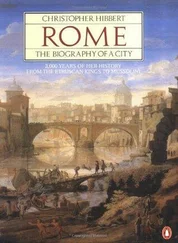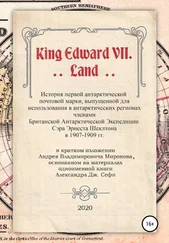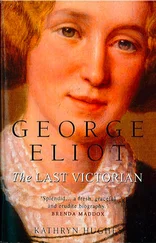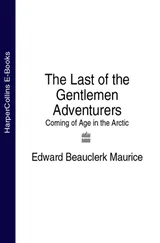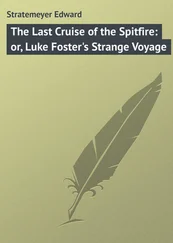Guests arrived by special train at Wolferton. They were met at the station and driven through the immense wrought and cast iron gates, designed by Thomas Jeckell, which were a wedding present from the gentry of Norfolk. On either side of the drive they could usually see an assortment of the Princess’s innumerable dogs — pugs and spaniels, beagles and borzois, basset hounds, chows and terriers, Eskimo sledge-dogs and French bull-dogs — or a number of curiously unconcerned rabbits. They entered the hall, known as the saloon, which was also the living quarters of a white cockatoo, to be met there by their host. And, once settled in, they were almost certain to enjoy themselves, provided they were not the victim of one of those dreadful practical jokes which were enjoyed by host and hostess alike but which were fortunately not often as heartless as that played upon a young midshipman who, on accepting a mince pie at tea-time, found it full of mustard.
Disraeli certainly enjoyed himself. He thought Sandringham ‘both wild and stately’ and fancied himself paying a visit to one of ‘the Dukes and Princes of the Baltic: a vigorous marine air, stunted fir forests … the roads and all the appurtenances on a great scale, and the splendour of Scandinavian sunsets’. The host was ‘very gracious and agreeable’; the hostess charming.
The Gladstones were equally taken with both of them; and after one of their visits, Gladstone told his secretary, Edward Hamilton, that they had ‘enjoyed themselves greatly, that nothing could have exceeded the kindness of their Royal Highnesses as host and hostess’. Mrs Gladstone wrote warmly of their ‘wish to make their guests happy’ and the welcome ‘absence of much form or ceremony’. As she was undressing on the last night of one of her visits, the Princess put her head round the bedroom door ‘offering in fun to help [her] and in the end tucking [her] up in bed’.
After a subsequent visit Mr Gladstone wrote of his reception being ‘kinder if possible even than heretofore’, and of the Prince’s ‘pleasant manners’: he was ‘far lighter in hand’ than his brother, Prince Alfred.
Most people, indeed, were rather dismayed when Prince Alfred was one of the party, particularly when there was music in the evening as there often was. One evening the Prince of Wales and his former French tutor, Brasseur, were playing whist against Gladstone and the Queen’s private secretary, Henry Ponsonby. Gladstone, reluctant to gamble, had asked the Prince, ‘For love, Sir?’ The Prince had complaisantly replied, ‘Well, shillings and half-a-crown on the rubber’; and, Gladstone having submitted to this, all had gone well until Prince Alfred started accompanying the pianist on the fiddle. ‘Anything more execrable I never heard,’ Ponsonby complained. ‘They did not keep time. They or perhaps the fiddle was out of tune and the noise abominable. Even Wales once or twice broke out, “I don’t think you’re quite right.” This for an hour. I quite agreed with Gladstone that it was a relief when we got away from that appalling din.’
Throughout their married life the Prince and Princess made a practice of coming to Sandringham for his birthday in November, for his wife’s birthday on 1 December and for the Christmas holidays. And on almost every occasion there was a large house party composed of guests from the most varied backgrounds, all of whom, on departure, were placed on a weighing-machine by the Prince, who recorded the readings in a note-book. One Christmas the Bishop of Peterborough arrived just as all the other guests were having tea in the entrance hall and he found the company ‘pleasant and civil’ but ‘a curious mixture’: ‘two Jews, Sir Anthony de Rothschild and his daughter; an ex-Jew, Disraeli; a Roman Catholic, Colonel Higgins; an Italian duchess who is an Englishwoman, and her daughter, brought up a Roman Catholic and now turning Protestant; a set of young Lords and a bishop’.
The Prince’s most intimate friends were either rich or aristocratic and usually both. Out of a sense of duty he often asked to Sandringham his fellow East Anglian landowners, the Earl of Leicester of Holkham Hall, Lord Hastings of Melton Constable, Sir Somerville Gurney of North Runcton Hall and Sir William ffolkes of Congham Lodge. But although he frequently went to stay with them in turn, he became a close friend of none of them. He preferred the company of other rich men who were more original, more amusing and, usually, more raffish.
Still one of his favourite companions was Henry Chaplin, his friend from Oxford days who, after a year at Christ Church, had decided that he had had enough of university life and had gone on an expedition to the Rocky Mountains of Canada where, encountering Blackfoot Indians on the warpath, he had prudently turned back to enjoy the more familiar excitements of the Burton hunt and the pleasures of life at Blankney Hall. Amusing, gregarious, extravagant and rumbustious, he was the subject of numerous scandalous stories set in the Midlands and in many of these stories the Prince of Wales appeared as a subsidiary character. It was, for instance, related how, returning together to Blankney after a drunken night with some local squire, Chaplin had driven his four-inhand full tilt into the closed iron gates at the end of his drive, killing the two leading horses outright; and how, coming across a fat old peasant woman in a lane on his estate one day, he and the Prince had pulled her skirt over her head and stuck a £5 note in her bloomers. Soon after the Prince’s marriage, Chaplin became engaged to the Marquess of Anglesey’s only daughter, who, within a few days of the date fixed for the wedding, eloped with the Marquess of Hastings. Eventually Chaplin married Lady Florence Sutherland-Leveson-Gower, elder daughter of the Duke of Sutherland.
The Duke himself was also a close friend of the Prince. Thirteen years the Prince’s senior, the Duke was a man of liberal views and eccentric tastes whose great delight was to drive the steam engines on the Highland Railway, and to assist the men of the Metropolitan Fire Brigade in the exercise of their hazardous duties. More than once the Prince, given notice of a fire by the Brigade’s organizer, Captain Eyre Shaw, accompanied the Duke on these unconventional escapades; and frequently he went to stay with him at Trentham in Staffordshire, at Stafford House in London and at Dunrobin Castle in Sutherland where he enjoyed to the full the hospitality of a host who, as the owner of 1,358,000 acres — the biggest landed estate in the country — was well able to afford to entertain him in the grandest style.
The Duke had been Member of Parliament for Sutherland until his father’s death in 1861; but he took little interest in politics, unlike many others of the Prince’s rich friends who combined public duty with private pleasure. Lord Cadogan, for example, was one of those Etonians who had been allowed to visit the Prince at Windsor when they were boys and who had accompanied him on his holiday in the Lake District; he accepted office under Disraeli, later joined the Cabinet as Lord Lieutenant of Ireland and became the first mayor of Chelsea where, as lord of the manor, he owned an extremely valuable estate. Charles Wynn-Carrington, who succeeded his father as third Baron Carrington in 1868, became Governor of New South Wales and was later given a seat in the Cabinet. Lord Hartington, afterwards eighth Duke of Devonshire, another intimate friend, also distinguished himself in public life as well as in the world of sport, occupying important positions in various governments while remaining, as Lord Rosebery said, ‘the most magnificent of hosts’. Such, too, was the case with Lord Spencer, the Prince’s Groom of the Stole, who became Lord-Lieutenant of Ireland, Lord President of the Council and subsequently First Lord of the Admiralty. Even Henry Chaplin, who was a Member of Parliament for thirty-eight years, joined the Cabinet as President of the Board of Agriculture.
Читать дальше


